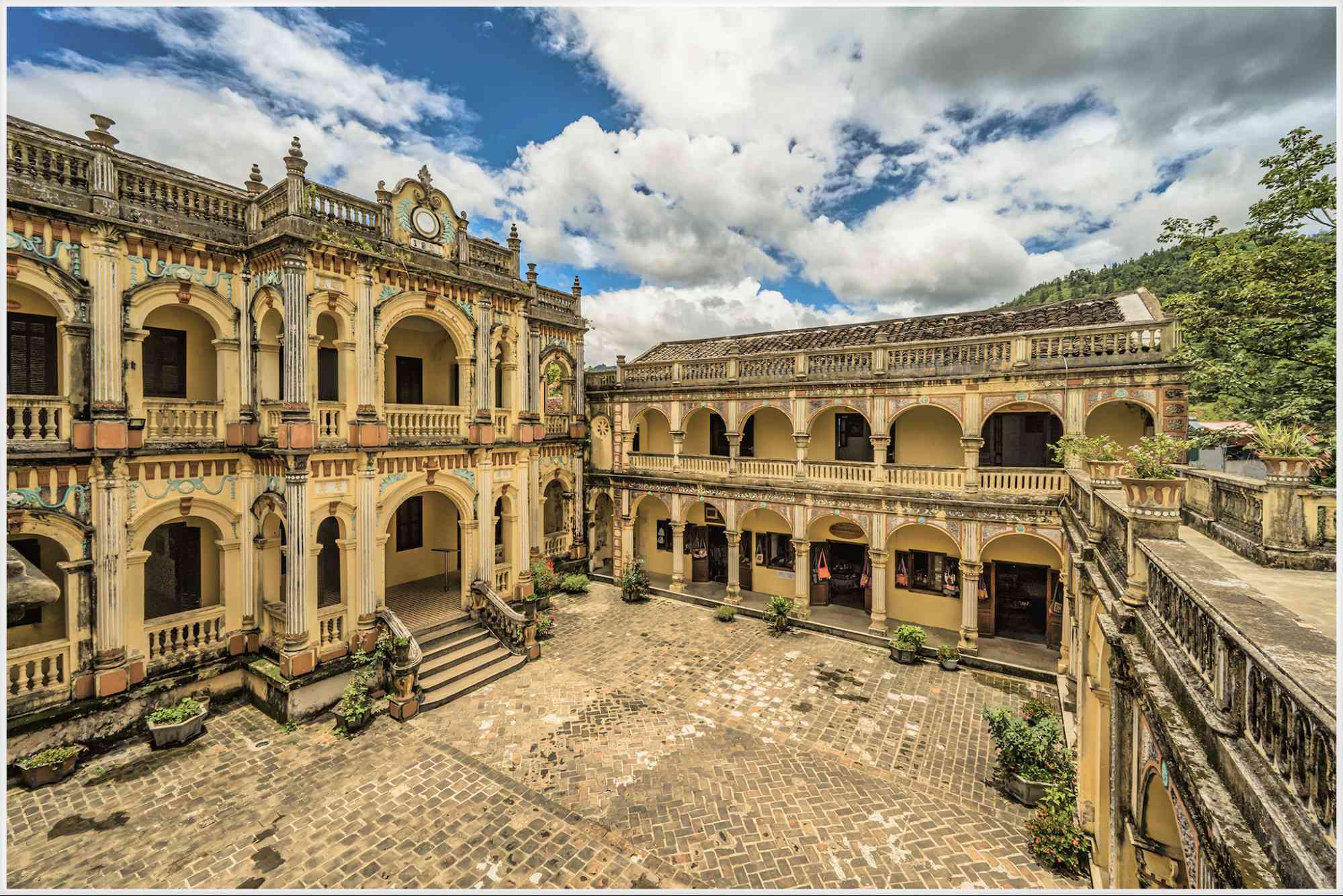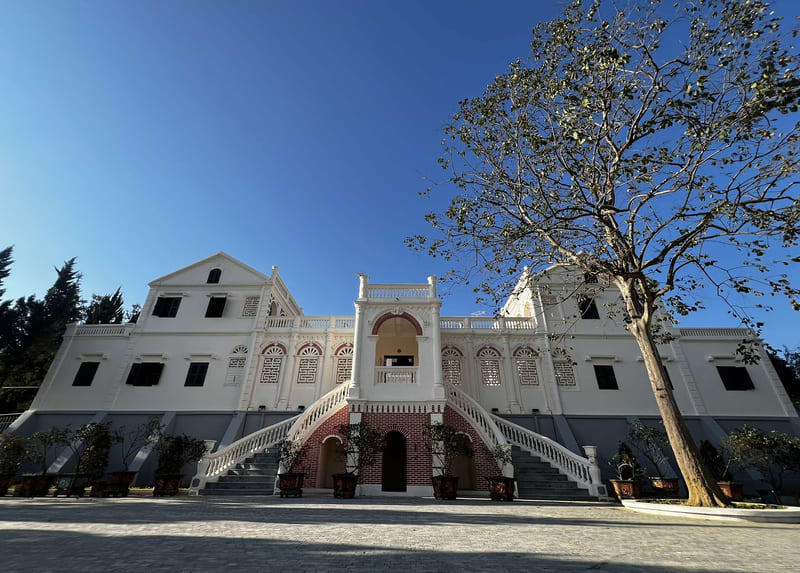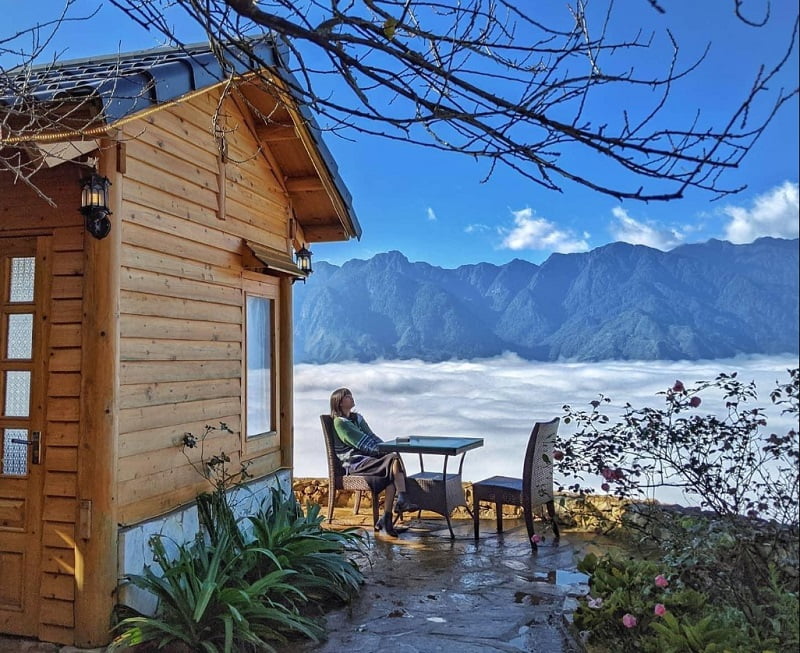Nestled in the highlands of Bac Ha, Lao Cai Province, the Hoang A Tuong Palace stands as a stunning symbol of a bygone era. Also known as the “Cat King” mansion, this historic site blends Asian and European architecture, telling a powerful story of local leadership, colonial influence, and the cultural heritage of the Tay people and Hmong people. For travelers exploring Vietnam’s northwest, visiting Hoang A Tuong Palace offers not only a photographic delight but also a journey into the region’s social history.
In this blog, we will dive into the history, architecture, recent restoration, cultural importance, and practical tips for visiting Hoang A Tuong Palace so you can appreciate its grandeur and legacy on your trip.
Where Is Hoang A Tuong Palace?
 Hoang A Tuong Palace is located in Bac Ha Town, in the Bac Ha District of Lao Cai Province, in Vietnam’s mountainous northwest. This place is often called the “White Plateau” because of its elevated terrain and stretching landscapes that locals and tourists love to explore. The palace is one of the most prominent landmarks in Bac Ha, sitting on a hill with strategic views: behind the mansion are high mountains, while in front flows a meandering stream.
Hoang A Tuong Palace is located in Bac Ha Town, in the Bac Ha District of Lao Cai Province, in Vietnam’s mountainous northwest. This place is often called the “White Plateau” because of its elevated terrain and stretching landscapes that locals and tourists love to explore. The palace is one of the most prominent landmarks in Bac Ha, sitting on a hill with strategic views: behind the mansion are high mountains, while in front flows a meandering stream.A Brief History of Hoang A Tuong Palace
The story of Hoang A Tuong Palace dates back more than a century. Construction began in 1914 and was completed in 1921. The palace was commissioned by Hoang Yen Chao, a powerful local lord of the Tay ethnic group, and later passed to his son, Hoang A Tuong, whose name now graces the mansion.
At that time, Hoang Yen Chao and Hoang A Tuong wielded considerable influence in the region, especially over the H’Mong population, which made up a large majority of the area. Locals even referred to them as “King Meo” (with “Meo” being an older term for H’Mong), reflecting their status and power.
The choice of constructing the palace in such a prominent location was no accident. Hoang Yen Chao hired a feng shui master to choose an auspicious site – the hill where the palace stands was seen as harmonizing yin and yang: mountains at the back, a stream in front.
The design process involved both French and Chinese architects, creating a unique architectural fusion. The result is a grand mansion that blends European classical style with Asian traditions, symbolizing cultural blending in that era.
Architecture and Design of Hoang A Tuong Palace
Hoang A Tuong Palace covers around 4,000 square meters and has 36 rooms. The overall layout is a closed rectangle, which is a fort-like structure more than just a home. Surrounding the mansion are strong defensive walls with loopholes (small openings) and a path along the top for guards to patrol, suggesting that the mansion also functioned as a fortress. Beneath or behind the main structures, there is said to be a secret escape tunnel.

Inside, the main building is two stories tall. From the entrance, visitors ascend a grand set of stairs to reach a spacious waiting hall and courtyard. On either side are wings reserved for family and royal members.
Materials used in construction were carefully selected: bricks bound with lime and beeswax, imported cement, steel, and tiles chosen for longevity and stability. The roofing tiles, believed to be nearly a century old, have been preserved and even replaced or repaired during recent restoration.
Decorative elements are particularly striking. Architectural motifs include laurel leaves, vine patterns, and classic European arches – all blending with Eastern sensibilities in a balanced, harmonious design.
The Cultural and Historical Significance
Hoang A Tuong Palace is more than an architectural marvel. It represents a complex social and cultural history of the northwest highlands. For the Tay and H’Mong communities, the palace is a reminder of a semi-feudal era, colonial politics, and local rulers who had real power on the ground.The mansion was officially recognized as a national historical monument by the Vietnamese government in 1999. Over time, it became a symbol for tourists interested in the border highlands, as well as for locals who feel pride in their heritage.Because of its dramatic hilltop location and cultural importance, Hoang A Tuong Palace is frequently featured in research on cultural tourism in the Bắc Hà District.Restoration: Bringing the Past to Life
In late 2023, a major restoration project for Hoang A Tuong Palace began. The Lao Cai Department of Tourism invested nearly 12 billion VND to restore and preserve the mansion’s structure, façade, and decorative elements. One of the most noticeable changes: the exterior has been repainted in a fresh shade of white accented with red brick details, a decision made after expert consultations and historical research. This color choice is believed to be close to the original, based on historical documents and advice from local elders.By early 2025, Hoang A Tuong Palace reopened for visitors, complete with restored wooden floors, a curated main hall, and rooms furnished with traditional costumes and artifacts that evoke the site’s past.
One of the most noticeable changes: the exterior has been repainted in a fresh shade of white accented with red brick details, a decision made after expert consultations and historical research. This color choice is believed to be close to the original, based on historical documents and advice from local elders.By early 2025, Hoang A Tuong Palace reopened for visitors, complete with restored wooden floors, a curated main hall, and rooms furnished with traditional costumes and artifacts that evoke the site’s past.What to See When Visiting Hoang A Tuong Palace
1. Grand Entrance and Courtyard
Walking in, visitors first arrive at the spacious courtyard after climbing two large curved staircases. This was once a gathering area for the family and important events. The courtyard, staircases, and ramparts are ideal for memorable photos and reflections.2. Main Building
The main building is two stories tall. The ground floor housed reception and meeting rooms, while the second floor contained living quarters. The interior features vaulted doors, wooden chairs, and original patterns still visible in the restored rooms.
3. Decorative Details
Don’t miss the ornamental elements: vine motifs, laurel patterns, European columns, and Eastern decorative lines. These reflect the rich blend of architectural styles in Hoang A Tuong Palace. Its Asian-European mix and defensive design make it architecturally unique.4. Rooms with Local Culture
One of the restored rooms displays traditional costumes of ethnic groups in Bac Ha, offering insight into regional traditions. You may also find small furniture items, decorative artifacts, and historically styled pieces that mirror life in the early 20th century. The palace tells a story of local leadership, colonial history, and ethnic heritage.Practical Tips for Travelers
Getting There: Bac Ha is about a few hours’ drive from Lao Cai City. Hire a local driver or book a tour that includes Hoang A Tuong Palace.
Entry Fee: Check the latest ticket price on-site; visitor policies may vary after restoration.
Guided Tours: Take a guide if possible — they can tell you about the Hoang family, the construction, and the tunnels.
Photography: Bring a camera — every corner of Hoang A Tuong Palace is photogenic.
Footwear: Wear comfortable shoes for walking up staircases, across courtyards, and around walls.
Respect: It’s a historical site, so be respectful of the architecture and artifacts.
Time: Allocate 1–2 hours to fully explore the palace and its grounds.
Conclusion
For travelers seeking authenticity, history, and architectural beauty, Hoang A Tuong Mansion offers an unforgettable experience. As you walk its courtyards, climb its staircases, and gaze across its scenic surroundings, remember that you are standing in a place that once symbolized power, heritage, and the dreams of a tribal lord. And if you want to experience Hoang A Tuong Palace together with the most authentic and meaningful highlights of the region, YESD’s Northern Vietnam Tour is the perfect choice. Beyond the palace, YESD guides take you to secret viewpoints, local markets, craft villages, and off-the-beaten-path destinations few tourists know. From food to festivals to daily life, you see the region through the eyes of the people who call it home.
And if you want to experience Hoang A Tuong Palace together with the most authentic and meaningful highlights of the region, YESD’s Northern Vietnam Tour is the perfect choice. Beyond the palace, YESD guides take you to secret viewpoints, local markets, craft villages, and off-the-beaten-path destinations few tourists know. From food to festivals to daily life, you see the region through the eyes of the people who call it home.